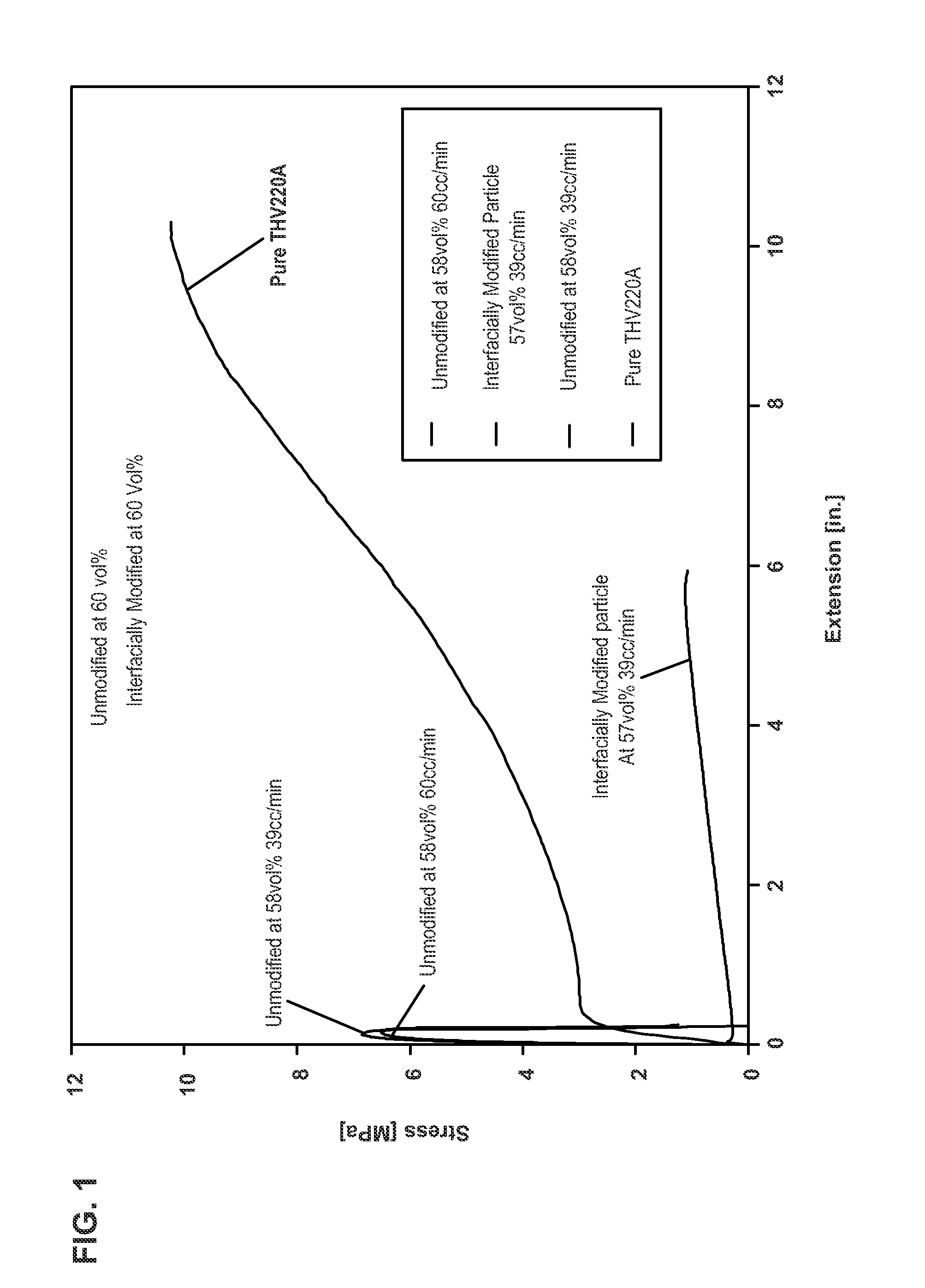Ceramic Composite
a ceramic and composite technology, applied in the field of ceramic composites, can solve the problems of inability to display composite properties, inability to use inorganic, non metallic or mineral particles in polymer composites, and the loss of abrasion capacity of sandpaper in a relatively short period of tim
- Summary
- Abstract
- Description
- Claims
- Application Information
AI Technical Summary
Benefits of technology
Problems solved by technology
Method used
Image
Examples
example 1
Aluminum Oxide
[0117]Aluminum oxide (Al2O3) was obtained from Sterling Supply, Inc (Minneapolis, Minn.), part number AO120. The particles were −120 mesh size (2O3 materials were made with both the unmodified powder and powder modified with two parts per hundred by weight (pph) NZ12.
[0118]The pycnometer density of the Al2O3 was measured using the lab Accupyc helium displacement pycnometer and determined to be 3.974 g / cc. The press density of the Al2O3 was measured using the lab Buhler metallurgical press and 1 inch diameter cylindrical press die. The press density was found to be 2.556 g / cc which was followed by calculation of the packing fraction of Al2O3, found to be 64.3%.
[0119]The NZ12 was first dissolved in isopropanol (IPA) and then added to the Al2O3. Additional IPA was added to make the mixture a slurry. The IPA, NZ12, Al2O3 mix was blended using a rotating stock pot (discussed above) and heated to ˜95° C. via a heat gun to boil off the excess IPA. Once cooled, the modified pa...
PUM
| Property | Measurement | Unit |
|---|---|---|
| particle size | aaaaa | aaaaa |
| tensile elongation | aaaaa | aaaaa |
| tensile elongation | aaaaa | aaaaa |
Abstract
Description
Claims
Application Information
 Login to View More
Login to View More - R&D
- Intellectual Property
- Life Sciences
- Materials
- Tech Scout
- Unparalleled Data Quality
- Higher Quality Content
- 60% Fewer Hallucinations
Browse by: Latest US Patents, China's latest patents, Technical Efficacy Thesaurus, Application Domain, Technology Topic, Popular Technical Reports.
© 2025 PatSnap. All rights reserved.Legal|Privacy policy|Modern Slavery Act Transparency Statement|Sitemap|About US| Contact US: help@patsnap.com

